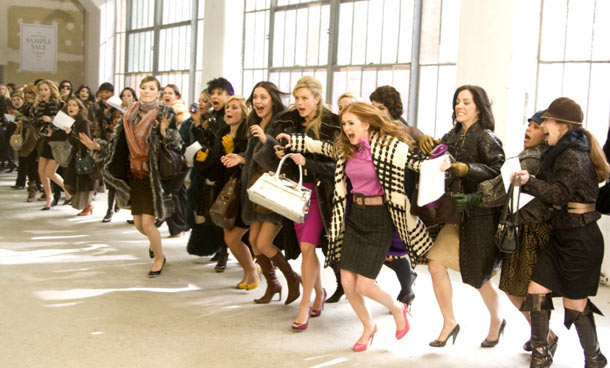Women Shop More Responsibly Than Men
Perhaps we can blame pop culture for the stereotype on women as shopaholics. Who can forget Carrie Bradshaw from Sex and the City, who bought so many pairs of $400 shoes, that she couldn’t afford a down payment on her apartment?
How about Rebecca Bloomwood, the fictional character created by Sophie Kinsella in the Confessions of a Shopaholic book series, and the movie of the same title?
So, who is really to blame when the word ‘shopaholic’ conjures images of women stampeding into the mall during a sale?
Women have been said to lack money management skills, compared to their male counterparts. Prince Charming Isn’t Coming: How Women Get Smart About Money, Addicted to Shopping and Other Issues Women Have with Money and Does This Make My Assets Look Fat?: A Woman’s Guide to Finding Financial Empowerment and Success – these personal finance books available in the market right now has helped cement the image of the female shopaholic universally.
However, studies suggest that the spending behaviour of men and women do not differ by much. A survey by ESPN Research and Analytics found that the centuries-old stereotype of women being shopaholics may not hold true, after all. It is found that women shop more responsibly than men.
According to the survey, men spend 39% more during the holidays than women. Women may spend more time shopping, but when men shop, they go in with the intention of buying something and they will achieve that goal even if it costs a bit more.
Patricia Betron, ESPN’s senior VP of multimedia sales told AdAge, “Retail has always been aimed at women and how women shop and behave, but men are the prime target if you’re looking to grow the sector.”
Though the stereotype of women being shopaholics may not be dismissed anytime soon, men are slowly catching up, too. But it’s extremely rare to see a prominent example of a male shopaholic, even though men are about as likely as women to be compulsive buyers.
Terrence Shulman, the founder and director of The Shulman Center, which treats compulsive theft, shopping, and hoarding, told Business Insider that being addicted to shopping affects men and women equally.
Men tend to over-shop
“Shopping addictions affect women a little more than men, but men are quickly catching up. Men don’t tend to over-shop, but over-spend: On a car, on a vacation, on sporting events, or on a concert. They typically go for larger purchases. Women can certainly do that too, but I’ve found women are a little more cautious about large purchases, but tend to do more continual shopping than men.”
The same phenomenon may be happening in Malaysia as well. According to Malaysia Department of Insolvency, in 2012, there were 13,613 men declared bankrupt, whereas only 5,962 women were bankrupt in the same year.
To further drive the point home, a poll ran by British firm Npower, found that men spend approximately £25 (over RM137) per week on impulse buys, while women spend only £19 (over RM104).
Though both men and women have been found guilty of retail therapy, the above studies have shown that women tend to shop more responsibly and consider big ticket items carefully before purchasing.
Due to many years of popular culture telling us that women are shopaholics, we tend to associate shopping with women, but clearly this addiction knows no gender. There just aren’t as many movies, TV shows, or books about male shopping addicts or confessing about being a male shopaholic.
Perhaps, this is due to the assumption that women are bad with money. While women do on average spend more time on retail, men have been proven to spend more when shopping.
So, ladies, we get the last laugh.










